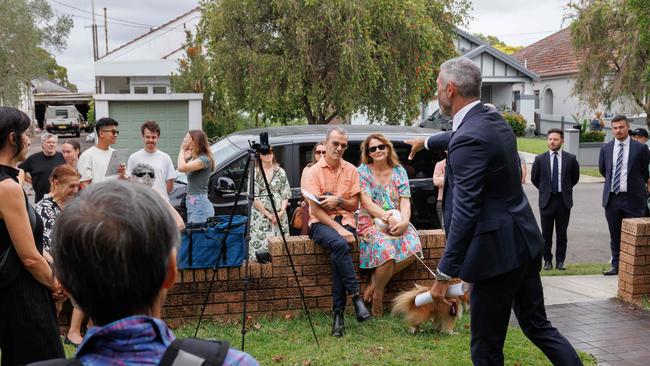New first homebuyer scheme will guarantee house prices jump
First-home buyers armed with 5 per cent deposits are going to put a rocket under some zones across the country and create a demand spike from January.

Don’t say you haven’t been warned. House prices are going to jump early next year.
To be precise, they are going to spike in the hotly contested sub-$1 million layer of the residential market from January 1.
In what is setting up to become the first major market distortion from a re-elected Albanese government, first-home buyers armed with 5 per cent deposits are going to put a rocket under demand in first-home buyer zones across the country.
Those buyers will be accessing the first homebuyer guarantee scheme, which kicks off in January. Crucially, an estimated 80,000 first home buyers waiting for the scheme must hang tight until the scheme is launched.
Experts say it means house prices will be artificially subdued in the second half of this calendar year and artificially boosted in the opening months of 2026.
“If you want to buy in the residential market, buy before this scheme kicks in, because house prices are going to rise when it commences,” Stuart Wemyss of the ProSolution Private Clients Group tells The Australian’s Money Puzzle podcast.
How much will prices lift? Property researcher Louis Christopher of SQM suggests prices could kick up by anything between 8 to 15 per cent, particularly in the areas of the larger cities most popular with first home buyers.
“When this universal scheme is up and running, we may have already had several rate cuts come through from the RBA,” says Christopher.
Moreover, the scheme is due to hit the market just as a string of related factors combine to put upward pressure on home prices.
National Australia Banks economics team turned heads this week with a major upgrade of interest cut forecasts. The bank expects mortgage rates to drop from around 6 per cent now to closer to 5 per cent next year, after the RBA pushes through six cuts including a big 0.5 per centage point cut on May 20.
Property analysts suggest a second key policy change will be the new lending rules around student debts. Banks will be allowed to ignore HECS-related debts when assessing a borrower’s mortgage servicing capacity.
Investment analysts also suggest money may begin flowing out of super accounts into residential property as the government’s plan to introduce a 15 per cent tax on amounts above $3m in super appears set for easier passage in the new parliament.
The existing first homebuyer guarantee scheme had an annual cap of 35,000 spots. But the new plan, under which new or existing properties can be purchased, will be unlimited.
The outlook for the new incentive package is lining up as a re-run of the Rudd government’s massive homebuyer stimulus during the global financial crisis, when the Labor government doubled the cash incentives for first-time home buyers during a period when the RBA was cutting rates.
The 2009 move sent prices rushing higher in first homebuyer zones across the nation, while house prices in the rest of the market were flat or moved lower.
James Kirby hosts the twice-weekly Money Puzzle podcast.





To join the conversation, please log in. Don't have an account? Register
Join the conversation, you are commenting as Logout